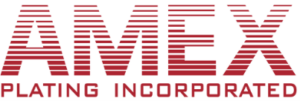Anodizing
The sulfuric acid process is the most common method for anodizing. The sulfuric acid anodize process films range from .0001″-.001″ thick. The overall thickness of the coating formed is 67 percent penetration in the substrate and 33 percent growth over the original dimension of the part. It is particularly suited for applications where hardness and resistance to abrasion is required.
The porous aluminum oxide absorbs dyes well, and subsequent sealing helps to prevent color loss in service. Although dyed anodized films are reasonably colorfast, they have a tendency to bleach under prolonged direct sunlight.
Some of the colors are: Black, Red, Blue, Green, Grey, Teal, Purple, and Gold. Parts can be treated chemically or mechanically prior to anodizing to achieve a matte (non-reflective) finish.
Sulfuric Acid Anodize Features:
- Improved wear resistance but less than Hard Anodize
- Non-conductive
- Clearer finish permits dying with a greater variety of colors.
- Less expensive than other types of Anodize with respect to chemicals used, heating, power consumption, and length of time to obtain the required thickness.
What are the governing specifications that cover Hardcoat Anodize?
- MIL-A-8625, Type II
- MIL-PRF-8625, Type II
- AMS 2472
